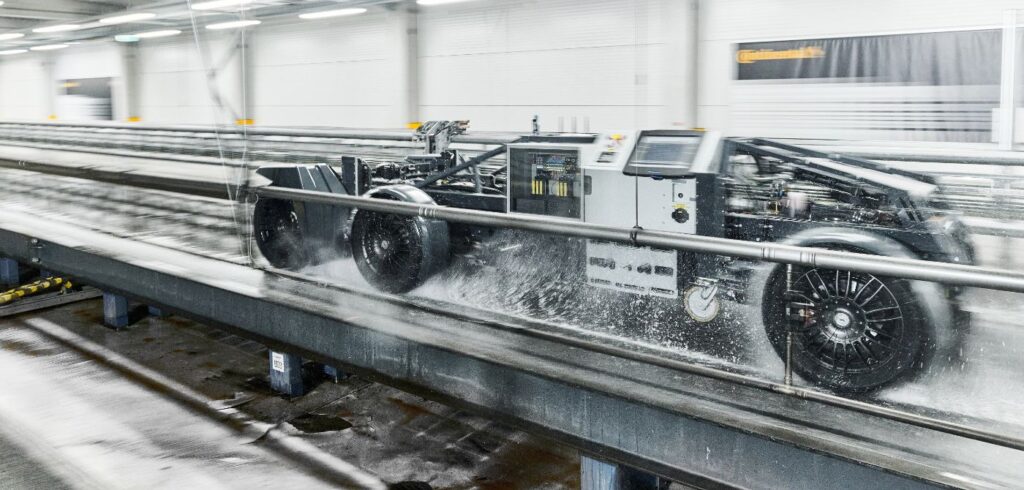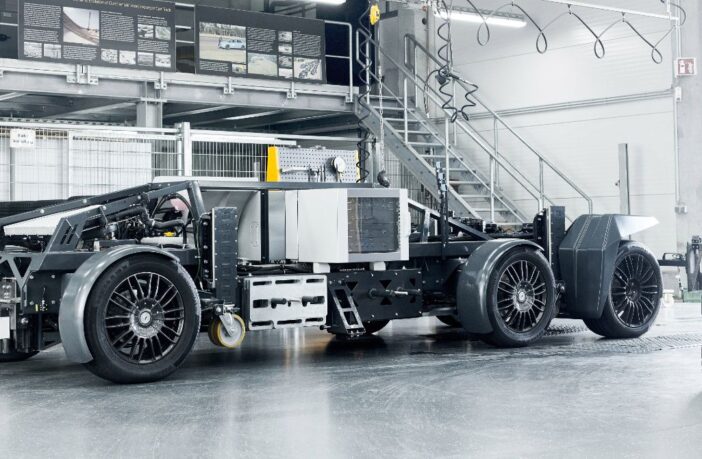A new driverless and fully electric test vehicle has been unveiled by Continental to measure the braking performance of passenger car tires, with the aim of further reducing braking distances to improve safety.
Located at the company’s Contidrom proving ground near Hanover, Germany, the fully automated AVA (Analytic Vehicle AIBA) enables the tire maker to conduct tests that precisely monitor the frictional properties of tires during braking maneuvers on dry and wet roads.
The Continental AVA combines the advantages of a test method which is independent of the vehicle model, with the controlled and reproducible test environment of the Automated Indoor Braking Analyzer (AIBA). By utilizing the new system, tire testing experts at Continental can now perform tests regardless of vehicle specific characteristics.
“Our analytic vehicle AVA helps us to analyze the performance of our premium tires in even greater detail and systematically develop them,” said Dr Boris Mergell, head of research and development at Continental’s Tires group sector. “Transmission of forces between the tire and the road surface is decisive for tire braking performance. It is equally important for cornering characteristics or when changing direction. The performance of the tire during braking is essential for the safety of the vehicle. For this reason, we make great efforts to analyze our tires as precisely as possible.”
When conducting tire braking tests, the AVA is accelerated to a speed of 65km/h, aided by an electromagnetic linear drive – based on modern roller coaster technology. Once up to speed, several fully automated braking tests can be conducted. The AVA drive system has two electrically driven axles which are powered by a high-performance battery. By producing a high maximum torque, the AVA can deliver a constant speed while the test tires on the third axle are systematically braked.
The integrated braking system is equipped with brake-by-wire technology from Continental’s automotive business sector. By transferring the braking signal electronically, the braking response of the system is quick and precise, enabling repeatable, accurate tests and measurements.
“Our AVA determines the transmission of forces between the tire and the road surface, while various slipping states, so-called µ-slip curves, are precisely reproducible,” explained Meletis Xigakis, who is responsible for global tire testing at Continental. “With the state-of-the-art measuring technology, we measure all of the forces which act between the tire and the road surface during braking. We can compare our tires and their various compound compositions even more precisely and optimize them for their special uses.”
Continental’s AVA is used within the Automated Indoor Braking Analyzer, a system which started operation in 2012. The test rig is capable of conducting brake tests on a range of road surfaces on a 75m-long test track. The test hall features five hydraulically interchangeable road surfaces and up to 100,000 braking tests can be performed each year on dry, wet or icy roads. The system is integrated into a 350m-long hall.
Continental’s new tire models are run for the equivalent of 25,000,000km per year on the company’s test beds and test tracks, equating to 625 times around the world.



